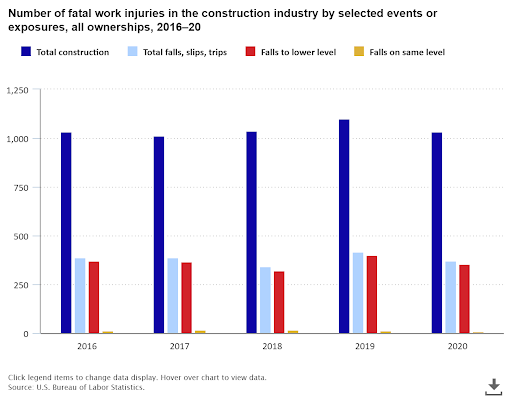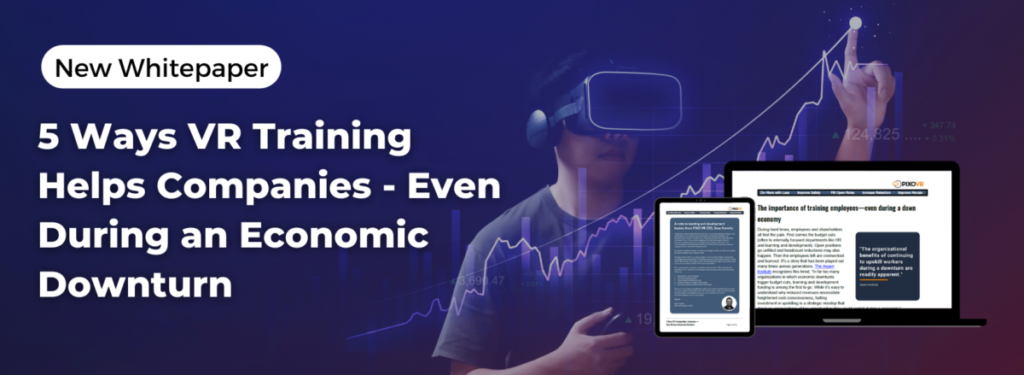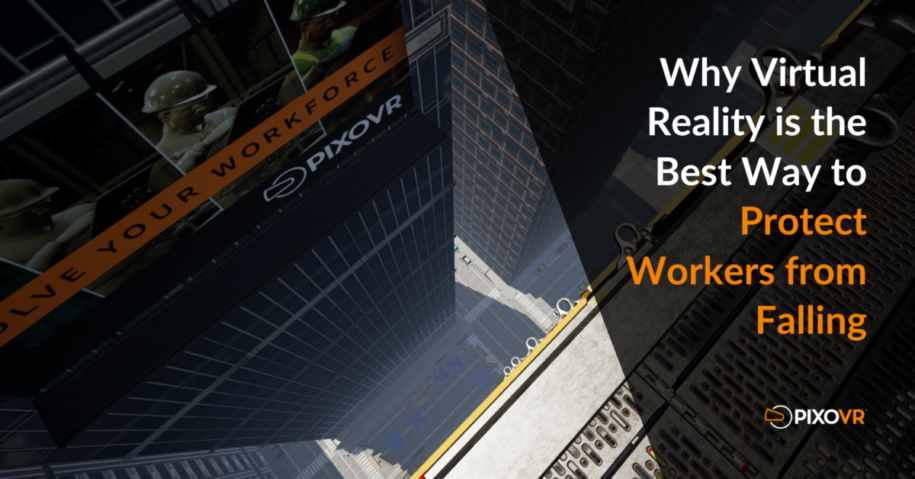Falls on construction sites aren’t getting any better. The past decade has seen almost no change, let alone a reduction in the amount of injuries and deaths from falling on the construction site.

According to data from the United States Bureau of Labor Statistics (BLS), falls are a leading cause of workplace fatalities and injuries. In 2020, falls accounted for 8% of all workplace fatalities and accounted for over 26% of all nonfatal injuries requiring days away from work. The BLS data also shows that falls to a lower level were the most common type of fall, accounting for about 70% of fall injuries.
Most construction companies train their workers on fall protection and provide safety equipment such as harnesses and guardrails. So why hasn’t there been any improvement?
At PIXO VR, we believe that in order to see a true reduction in construction site injuries, workers need to be trained on fall protection using the most realistic and effective method possible—virtual reality.
Why virtual reality is superior for fall protection training
Virtual reality (VR) is an extremely effective training tool because it allows learners to practice skills in a simulated environment that closely resembles the real-world setting. This can provide a more immersive and realistic learning experience than traditional training methods, such as lectures or videos.
Multiple research studies have shown virtual reality training to have a much higher retention rate and recall accuracy than traditional training methods. Trainees say this is because VR is more interactive and engaging for them.
VR is the only training medium that allows learners to make mistakes and learn from them in a safe and controlled environment. This can be especially useful for training in high-risk or hazardous occupations, where mistakes can have serious consequences. This makes fall protection training an excellent use case for VR.
Fall protection VR training is ready and available
Fall protection VR training already exists that has been used by construction companies and proven to be incredibly effective. The training covers things like:
- How to select, inspect, and don protective equipment.
- How to use anchors and tie off fall arrest safety harnesses.
- How to secure tools and complete construction tasks while avoiding fall hazards.
- How to handle an attached fall and practice recovery.
Most importantly, the training also has an assessment on fall protection to evaluate the worker’s ability to meet the requirements of proper fall protection. This is incredibly valuable to ensure that workers are prepared to safely work at heights.
Fall protection VR training benefits workers and construction companies
Using VR for fall protection training keeps workers safer and that saves money for the companies they work for. The higher effectiveness of the VR training results in less falls. And less falls means:
- Higher productivity – in a time of skilled labor shortage, this is critical to keeping projects going and completing them on time.
- Less spent on disability – the less injuries, the less money spent on disability claims and payouts—let alone reducing the chances of litigation costs.
- Lower insurance premiums – as falls steadily decline, insurance rates also go down saving construction companies significant money.
- Better worker retention – with safer work environments comes happier workers. And that means keeping critical skilled labor at a time where retention rates are low.
Overall, the use of VR in training can increase safety and reduce costs. That makes it a great investment for construction companies looking to improve productivity and train unskilled labor to fill gaps.
Wondering how to get started with VR training?
For learning and development leaders looking to help their company’s thrive, VR training is the answer. VR content naturally compliments existing training content to provide employees with ways to apply and practice skills needed to be successful.
Want more evidence for leadership on the cost cutting benefits of VR training? Read whitepaper here!
In our previous whitepaper we covered how to bring VR into your training program, get the step-by-step guide here!
Download the whitepaper: 5 Ways VR Training Helps Companies Even in an Economic Downturn’:


Leave a Reply
You must be logged in to post a comment.